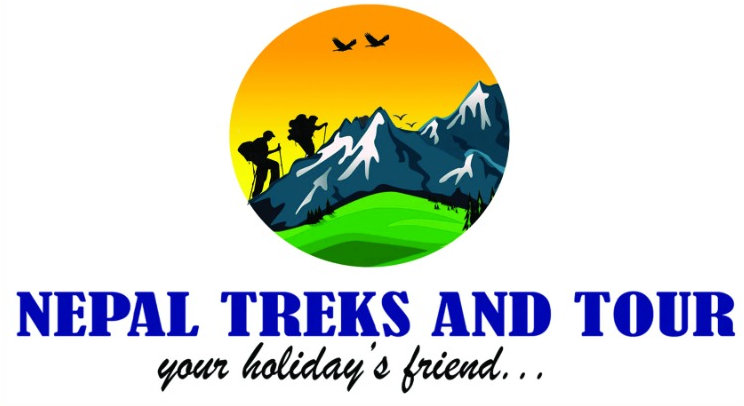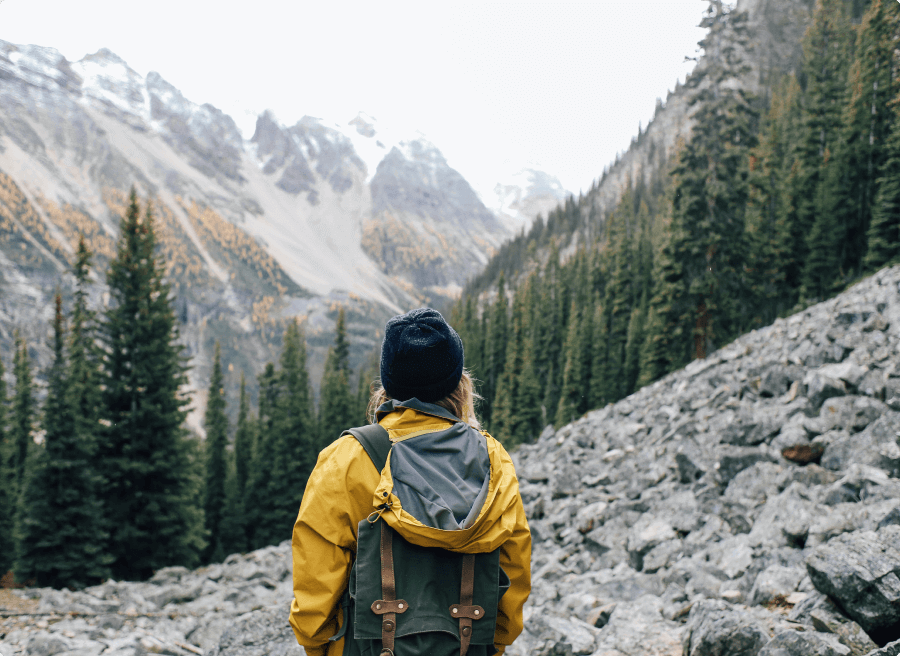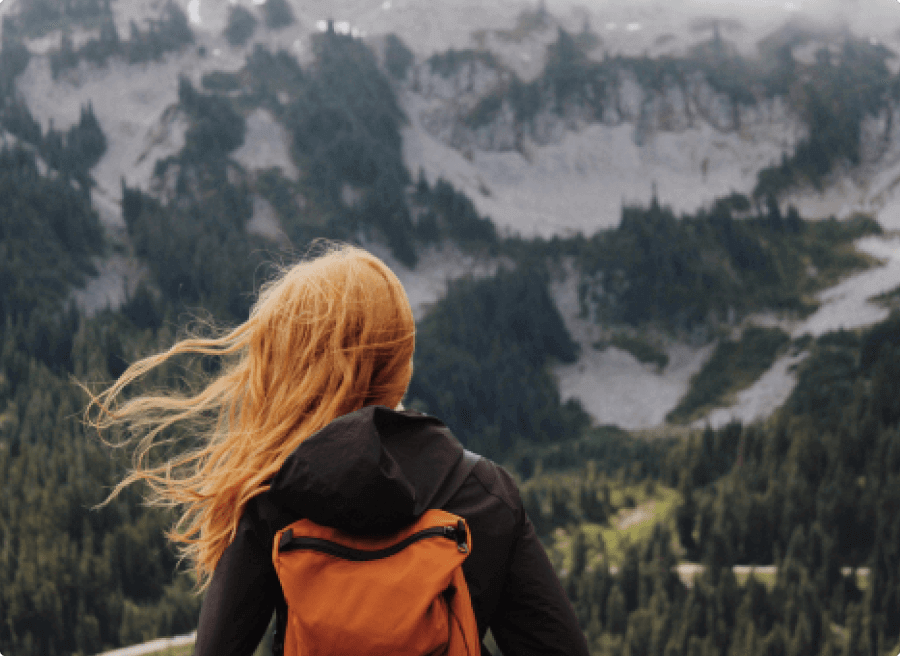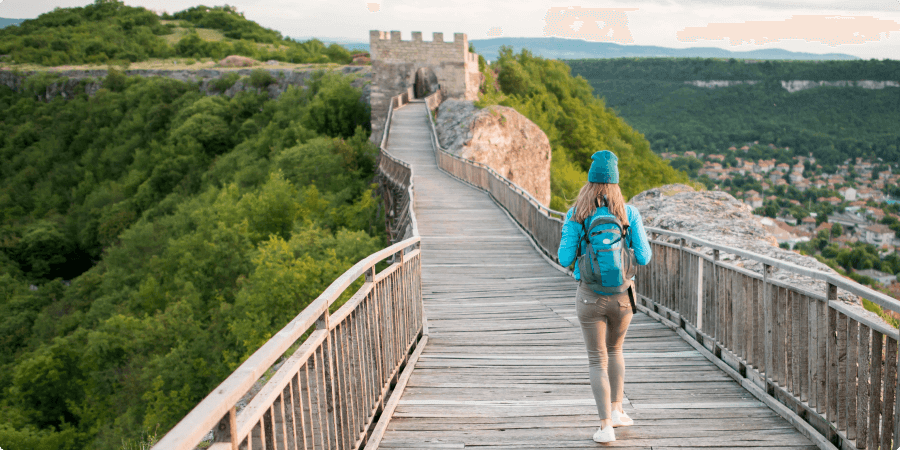“Hiking” and “trekking” are terms that are commonly used synonymously, but is this an accurate description? Check the details if there is still any doubt. Develop a thorough understanding of the differences between hiking and trekking so that your enthusiasm for the outdoors is strengthened.
Trekking and hiking are popular activities among adventurers. Even though these terms are frequently used interchangeably, they are not the same. They actually represent different activities.
We’ve put together this guide on the differences between hiking and trekking in order to clear up any confusion. In this manual, we will examine: THE DIFFERENCE BETWEEN HIKING AND TREKKING.
Defining Trekking and Hiking:

At first glance, trekking and hiking may seem synonymous, but a closer examination reveals subtle yet significant distinctions. Hiking is generally characterized by shorter, more leisurely walks on well-maintained trails.
It’s an activity accessible to people of varying fitness levels, often completed within a day, and is ideal for those seeking a refreshing nature walk or a weekend escape.
On the other hand, trekking entails more extended journeys, often spanning multiple days and covering diverse terrains. Treks are immersive experiences that take participants through challenging landscapes, requiring a higher level of physical endurance.
Unlike hiking, treks may involve overnight stays, camping in remote locations, and navigating through more rugged and less-trodden paths.
Here are some notable trekking and hiking destinations in Nepal:
Trekking Destinations:

Everest Base Camp Trek:
Offers stunning views of the world’s highest peak, Mount Everest.
Takes you through Sherpa villages and Sagarmatha National Park.
Annapurna Circuit:
Circles the Annapurna Massif, providing panoramic views of Annapurna and Dhaulagiri ranges.
Passes through diverse landscapes, from subtropical forests to high-altitude deserts.
Langtang Valley Trek:
Takes you through the Langtang National Park, known for its biodiversity.
Offers views of Langtang Lirung and other snow-capped peaks.
Manaslu Circuit Trek:
Encircles Mount Manaslu, the eighth highest mountain in the world.
Less crowded compared to other popular treks, providing a more remote experience.
Upper Mustang Trek:
Explores the ancient kingdom of Mustang, with a distinct Tibetan culture.
Features unique landscapes, including eroded canyons and colorful rock formations.
Hiking Destinations:
Phulchowki Hike:
Located near Kathmandu, offers a day hike to the highest hill in the Kathmandu Valley.
Provides panoramic views of the Himalayas and the surrounding valley.
Shivapuri Nagarjun National Park Hike:
A short hike near Kathmandu that takes you through lush forests.
Offers views of the Kathmandu Valley and the distant Langtang Range.
Dhampus Sarangkot Hike:
A relatively easy hike near Pokhara with stunning views of the Annapurna and Dhaulagiri ranges.
Passes through picturesque villages and terraced fields.
Chisapani Nagarkot Hike:
Takes you through the Shivapuri National Park and offers views of the Langtang Range.
Leads to the popular hill station of Nagarkot, known for its sunrise and sunset views.
Ghorepani Poon Hill Trek (Short Hike):
A shorter trek in the Annapurna region, culminating in the iconic Poon Hill sunrise.
Ideal for those with limited time, providing stunning views of the Himalayas.
These are just a few examples, and Nepal has many more trekking and hiking options catering to various preferences and fitness levels.
Always ensure proper preparation and follow safety guidelines when embarking on trekking or hiking adventures in Nepal.
Terrain and Difficulty:

The type of terrain encountered is a key factor in distinguishing between trekking and hiking. Hiking trails typically consist of well-marked paths, often in well-maintained natural areas or parks. These trails are generally easier to navigate and present fewer challenges.
In contrast, trekking trails lead adventurers into more remote and rugged terrains. Treks often involve steep ascents, descents, and traversals through varying altitudes.
Participants may need to contend with uneven paths, river crossings, and unpredictable weather conditions, adding an element of adventure and unpredictability to the journey.
Time Commitment:
Another crucial difference lies in the time commitment required for each activity. Hiking is usually a shorter-term engagement, perfect for those looking to spend a few hours in nature without a significant time investment. It’s an excellent option for a day trip or a quick getaway to rejuvenate the mind and body.
On the other hand, trekking demands a more considerable time commitment, often spanning several days or even weeks. Trekkers immerse themselves in the wilderness, allowing for a deeper connection with nature and a more profound exploration of the landscapes they traverse.
Equipment and Gear:
The gear required for trekking and hiking also reflects their distinctive nature. Hikers typically need lightweight and comfortable footwear, weather-appropriate clothing, a daypack, and essentials like water and snacks. The emphasis is on simplicity and mobility, catering to the relatively short duration of the activity.
In contrast, trekkers need to be equipped for the challenges of extended journeys. This includes durable hiking boots, trekking poles for stability on uneven terrain, a quality sleeping bag for overnight stays, and additional layers to cope with varying temperatures.
The gear list for trekkers is more comprehensive and tailored to the demands of sustained outdoor living.
Cultural and Scenic Elements:
While both trekking and hiking offer opportunities to connect with nature, treks often provide a more immersive experience in terms of cultural interactions.
Trekking routes frequently pass through remote villages, allowing participants to engage with local communities, witness traditional practices, and gain insights into the cultural tapestry of the region.
Hiking, being a shorter and less remote activity, may not offer the same level of cultural immersion. However, it does provide a chance to appreciate the scenic beauty of easily accessible natural areas.
Environmental Impact:
Environmental consciousness is paramount for responsible outdoor enthusiasts. Both trekking and hiking play a role in conservation by endorsing eco-friendly practices.
However, trekking, often venturing into remote locales, demands heightened vigilance in minimizing the environmental footprint. Adhering to the principles of Leave No Trace is imperative; trekkers must leave nature as they found it.
Respect for delicate ecosystems is crucial, encompassing responsible waste disposal, minimizing noise pollution, and avoiding damage to flora and fauna.
By cultivating a mindset of environmental stewardship, trekkers contribute to the preservation of pristine landscapes, ensuring that future generations can also revel in the awe-inspiring beauty of these natural realms.
Level of self-sufficiency:
One more notable distinction between trekking and hiking lies in the level of self-sufficiency required. Hiking typically involves shorter durations and often occurs in areas with easier access to amenities.
Hikers may carry a daypack with essentials, but the reliance on external support is lower, allowing for a more spontaneous and carefree experience.
On the other hand, trekking demands a higher degree of self-sufficiency, especially in remote and less-developed regions.
Trekkers often carry more substantial backpacks with camping gear, food supplies, and necessary equipment for extended stays. This self-reliance adds a layer of adventure, as trekkers must be prepared for changing weather, unforeseen challenges.
And the absence of immediate assistance. This aspect of trekking appeals to those seeking a more immersive and self-reliant wilderness experience.
In conclusion, while trekking and hiking share a common love for the outdoors, they represent distinct experiences catering to different preferences and ambitions.
Hiking is perfect for those seeking a day of leisure in nature, while trekking beckons those with a thirst for adventure, a willingness to embrace challenges, and the desire to forge a deep connection with the wild.
Understanding the differences between trekking and hiking ensures that outdoor enthusiasts can choose the path that aligns with their aspirations and capabilities, ensuring a fulfilling and enjoyable experience on the trail.
Whether captivated by the simplicity of hiking or enticed by the challenges of trekking, Nepal Treks and Tour stands as the quintessential choice for you.
So, choose us for your next expedition, and let the breathtaking trails and warm hospitality redefine your understanding of extraordinary outdoor exploration.







